
1. The largest old-growth beech forest in Europe (Zakarpattia Oblast)
The Carpathian old-growth beech forest is among the largest and the oldest ancient woodlands on the continent. A unique natural monument of global scale, the forest includes 10 sections stretching 185km from the Rakhiv and Chornohora mountain ranges all the way to the Slovakian part of the Carpathians. The Ukrainian section of the woodland is part of the Uzh National Park and the Carpathian Biosphere Reserve. Extending into neighbouring Slovakia, this natural wonder was listed as a UNESCO World Heritage site hosted by both countries in 2007. Compared to other UNESCO forest objects, the Carpathian beech forest supports a rich variety of 123 plants and animals, including Ukraine’s rare brown bear.
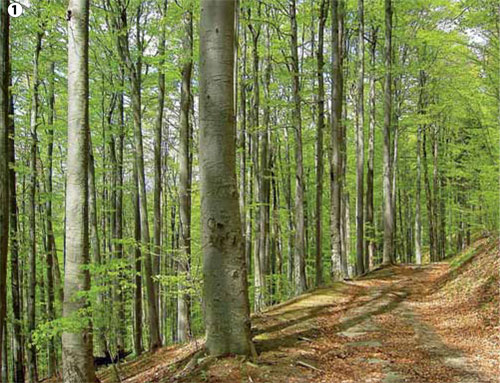
2. Kmilniansky Ravine, the biggest ravine in Europe (Kaniv County, Cherkasy Oblast)
Kaniv abounds with over 5,000 ravines. All of its twists and turns included, the Khmilniansky Ravine dominates the local landscape, spreading over 120km like a giant tree with as many as 500 branches. In some sections, the ravine plunges to a depth of 70m. Ravines are among the worst enemies of agriculture. Every year, the Khmilniansky Ravine swallows up to 10ha of farmland. Moreover, it silts the nearby fields with mud and sand. It took the ravine just one day back in 1903 to dam the Ros River and bury 10km of rich Dnipro floodplain soil under a thick layer of mud. Wandering along the bed of this unpredictable ravine during a downpour may be dangerous: escaping the muddy trap is nearly impossible. A turbulent stream carries huge stones, mud and sand along the ravine destroying everything in its path, including dams and bridges. From 1904-1911, it took locals seven long years to clear the ravine’s mud from the Ros estuary.
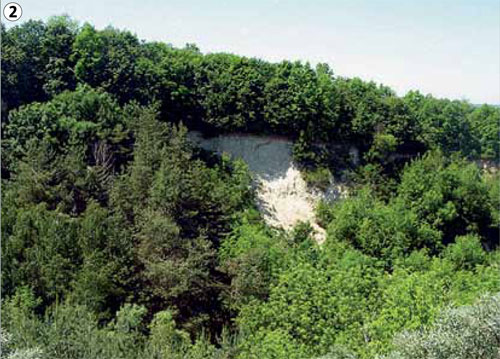
3. Khortytsia, the biggest river island in Europe (Zaporizhzhia)
12.5km long and 2.5km wide, Khortytsia covers almost 3,000 hectares. In terms of geology, the island is part of the Ukrainian crystalline plate layered on 2.5 million year old Precambrian granite. These layers are best seen in the huge 40-50m high coastal rocks on the northern part of the island that help to shape its beautiful landscape. The valley around Khortytsia is the only preserved part of the Dnipro rapids. The river had nine rapids in this area before the massive Dnipro Hydroelectric Power Plant was built nearby. Very few boats could pass through them in the old days. Rumor has it that amateur archeologists still frequently fish out ancient items there. The only thing I found was a pitted WWII helmet in a shallow spot near the swimming area.
The first thing Ukrainians think of when they hear the name Khortytsia is Cossacks. They settled on the island in the 16th century. However, the traces of human life there trace back to the Stone Age. The oldest archeological finds date to the 10th-6th millennia B.C. Legend has it that Prince Sviatoslav the Brave was killed in a battle with Pechenegs in 972 in Khortytsia. Today, the island hosts the Museum of Zaporizhzhia Cossack History and the Zaporizka Sich Historical Park designed to resemble a Cossack military base.
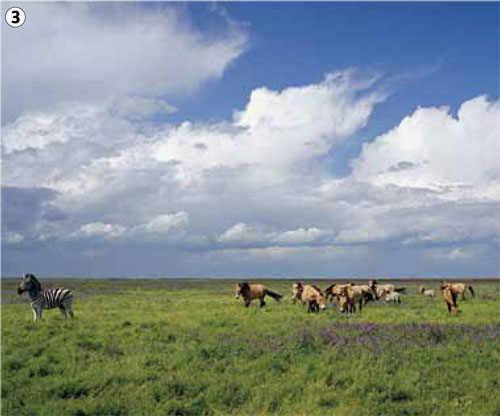
4. Askania-Nova, the largest steppe reserve in Europe (Chaplynka County, Kherson Oblast)
The Askania-Nova steppe covers 11,000 hectares. As you look at sea of grass, it seems boundless. The place was named Askania-Nova by Duke Anhalt-Köthen, the then owner, in 1841 after his Askania mansion in Germany. Meanwhile, Friedrich Falz-Fein, another local German-born landowner, established a private reserve there in 1898, fulfilling a life-long dream. A wildlife lover, he kept a garden, created a zoo and brought dozens of wild bird and animal species from all continents of the world to the arid steppe. The Askania reserve includes three sections. One hosts its biggest attraction: herds of Przewalski’s horses, buffalo, Saiga antelopes and many other endangered species. In summer, antelopes and zebras wander around the reserve adding a unique African ambience to the Ukrainian steppe.
Almost 500 plant species grow in this unique wildlife park. Sometimes I wish I had been born a Przewalski’s horse or a buffalo living in the amazing fragrant steppes of Askania-Nova.
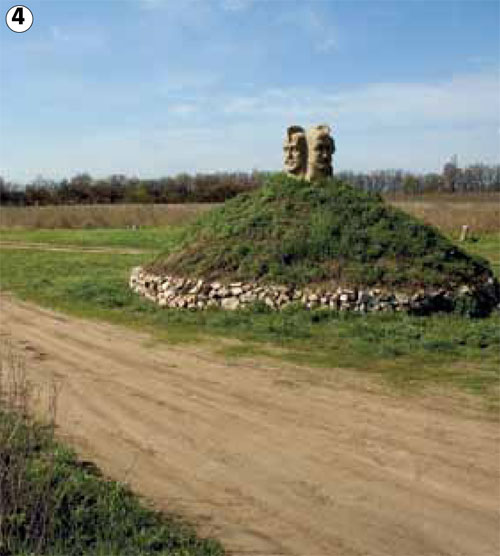
5. The Arabat Spit, the longest spit[1] in Europe (from the Kerch peninsula in Crimea all the way to Henichesk, a town in Kherson Oblast)
115km long and 7km to 270m wide, the Arabat Spit once lay buried beneath the waves of the Sea of Azov. It became dry land in the 12-13th centuries after the beds of the Syvash and the Sea of Azov lowered, revealing a long, narrow chain of small islands that were slowly blanketed with sand by the seas’ waves. Eventually, the spit emerged.
The name comes from the word rabat, a fortified place in Arabic. Until 1771, the spit hosted a Turkish fortification built to prevent Cossack armies from marching over to Crimea on dry land. Yet this turned out a waste of money after the Cossacks, led by Ivan Rih and the legendary Ivan Sirko, later attacked the fortification. The Arabat fortress lost its strategic purpose in the mid-19th century. Today, only its ruins remain. The coast of the Arabat Spit is a long beach extremely popular with tourists. The sea is still shallow 1.5 kilometers away from the shore and the local swim season lasts for 130 days.
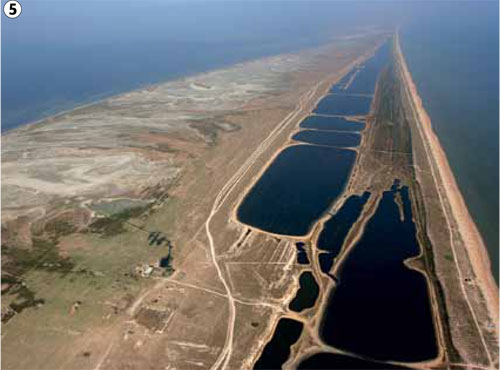
6. Oleshkiv Sands, the largest desert in Europe (Tsiurupynsk County, Kherson Oblast)
A desert seems strikingly out of place in Ukraine. In summer, the sand heats up to 167F due to the lack of humidity in the area. It rains far less there than in neighbouring regions as the ascending flow of hot air dissolves the clouds above. As in all other deserts, sandstorms sometimes occur there.
The Oleshkiv desert is 15km in diameter and covers 160,000 hectares. Human activity has contributed to its expansion. The lower Dnipro valleys had always been spotted with sands but dense steppe vegetation prevented their expansion. In the 19th century, huge flocks of sheep were brought into the area. Like a plague of locusts, they devoured the grass that held the sands at bay. As a result, wind erosion freed and blew the sands over a huge area.
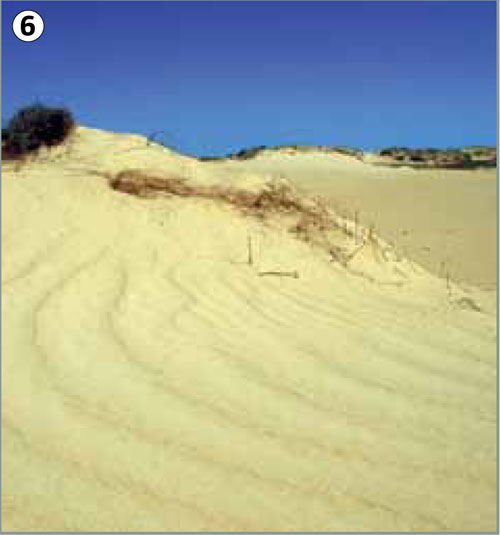
7. OptimisticCave, the longest gypsum cave in the world (near Korolivka village, Borshchiv County, Ternopil Oblast)
The cave is currently Ukraine’s only natural object listed in the Guinness Book of Records. Its underground corridors stretch for 240km, the distance from Kyiv to Vinnytsia. Cavers learned about the mud-covered entrance to the cave from local children. In May 1966, Lviv speleologists discovered a gypsum tunnel that was several hundred meters deep. The cave got its name from the optimism of the Lviv cavers, whose enthusiasm was not shared by peers from other countries. For some reason, they all thought the cave was no longer than 3km. Eventually, it became an unexpectedly discovered sensation.
The longest gypsum cave in the world and the third longest of all caves, Optimistic Cave is still underexplored. Who knows—perhaps a few more miles of underground corridors and labyrinths are still waiting to be discovered. Ten sections of the cave have been discovered so far and only a few are interconnected with narrow tunnels. For a modest fee, those willing to delve into the mysterious, breathtaking labyrinth can rent the necessary clothing and equipment and hire an experienced guide.
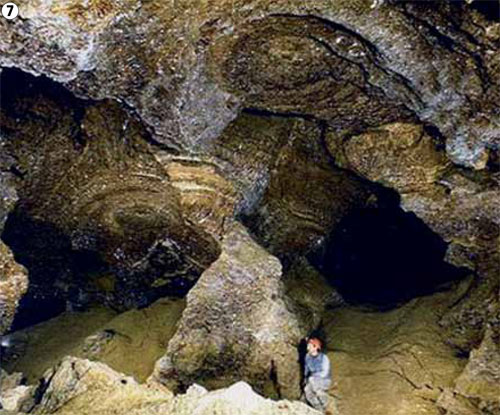
[1]Spit: a narrow point of land projecting into the sea

